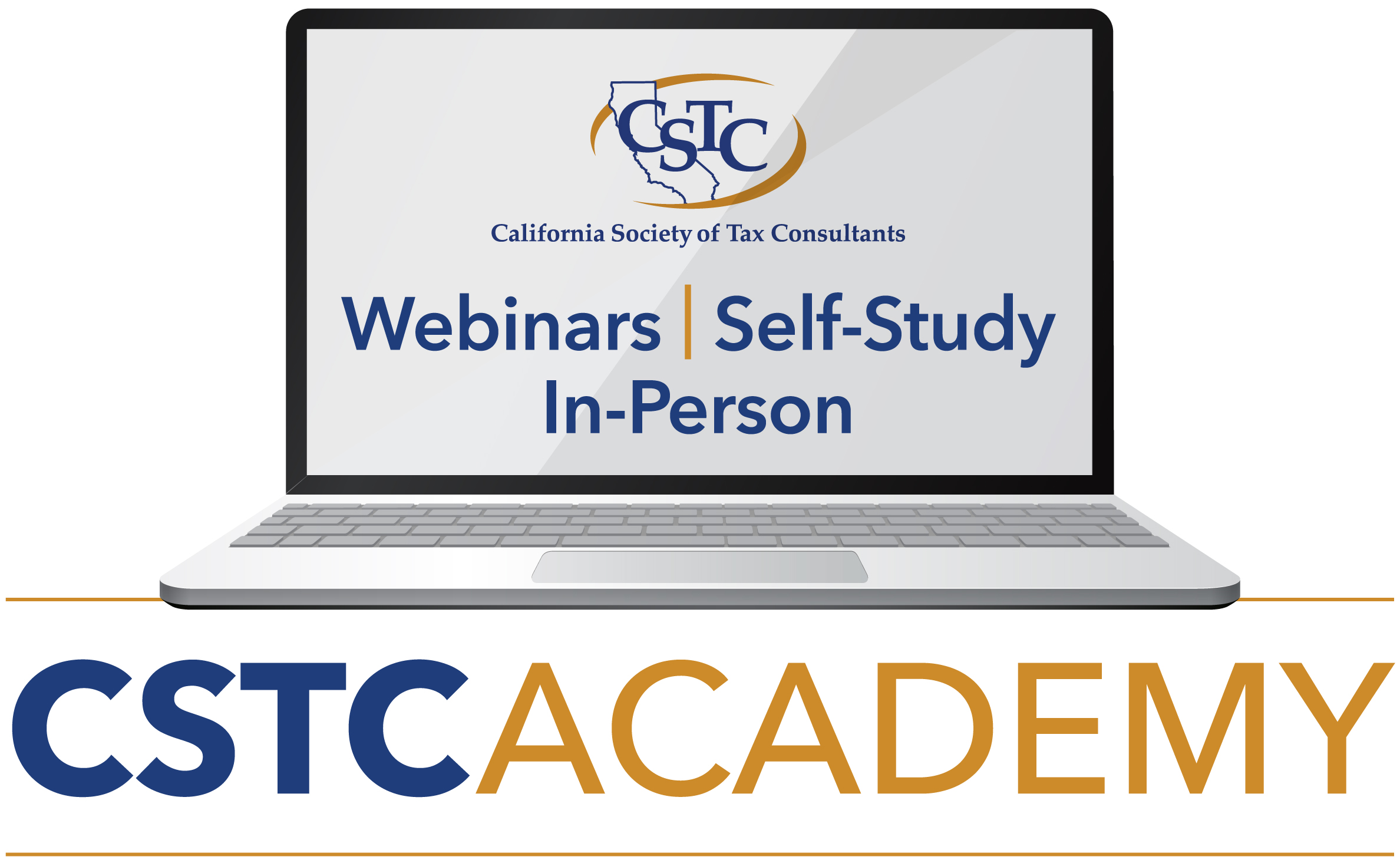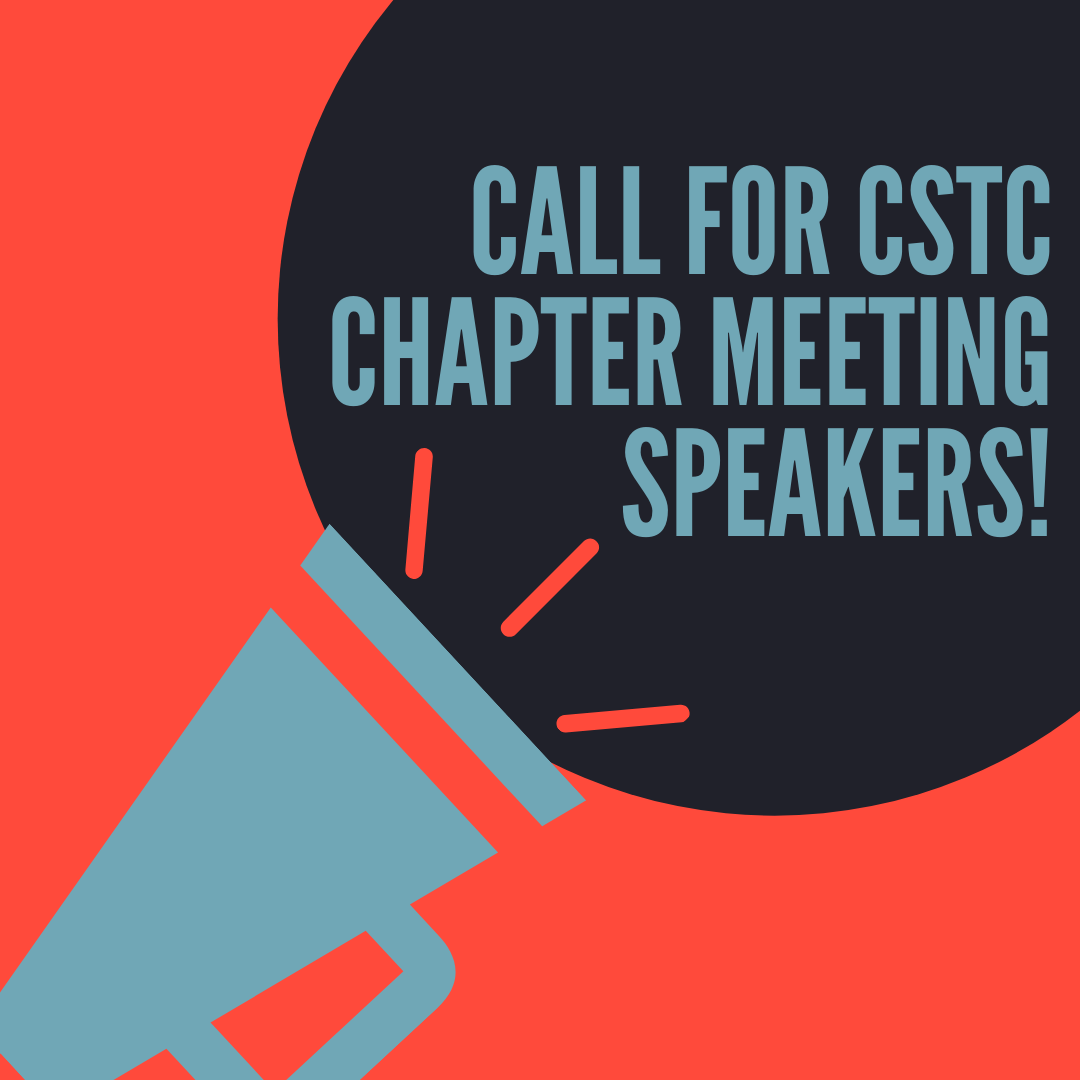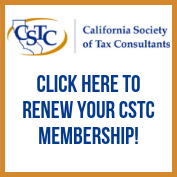- Home
- Membership
- Education
- Chapters
- News
- Member Resources
- Events
- Find a Tax Preparer/Consultant
Calendar
|
CSTC Academy - Intellectual Property
Tuesday, August 04, 2020, 8:30 AM - 10:10 AM PDT
Category: CSTC Academy
 Tuesday, August 4, 2020 Topic: Intellectual Property Course Description: Knowledge Level: Intermediate Learning Objectives: #1: Attendees will learn the different types of intellectual property rights, how they are created, how they can be protected, (or not), and what to look for at the end of the trail for each: #2: Attendees will get an idea of how a policy disfavoring pure intellectual property control is likely to remain in one form or another from now on, and why, and that the IP owner will have to work harder and faster to try and keep ahead. The hunt for the perfect invention, the perfect business just gets more difficult. #3: Attendees will be left to think in terms of techniques, checklists and approaches that an IP owner could employ and expect resistance from everyone.
As a short version of an introduction, Curt assists in start-up or trouble modes: Start-up mode includes: Trademark, Patent, Entity Selection, & Operating Optimization, and evaluating licensing for instant capital gain capability versus ordinary income, versus self-employment income. Trouble mode includes: Evaluating IRS & FTB Non-Compliance Errors & Planning (civil & criminal); Tax Debt Solutions: Asset Loss Reduction & Transfer Planning; Limiting Current & Future Liability. Details of help and expertise to support your project includes advice relating to the following: (1) Tax effect is necessarily independent of patentability (using the trade secret rules on sale to enhance instant cap gains on sale); (2) After the Tax Cuts and Jobs Act of 2017 the picture for patents, trade secrets and copyrights has changed. (3) He provides guidance to help maximize patentable nature of such inventions by characterizing the scientific nature of the project and to reduce/eschew the purely internal IT (non-scientifically oriented "spread sheet" or "html" functions); (4) He makes the IT persons aware that the additional PTO board hurdle of finding section 101 statutory subject matter should be an early planning guide. It is believed that the elimination of capital asset status in the Tax Cuts and Jobs Act of 2017 was an eventual backlash over the greater focus on internet advertising. Tax patents from several years ago didn't help. (5) His background as a Basic/Fortran programmer, coupled with graduate degrees in Chemical Engineering & Electrical Engineering, Law, Taxation, & Business put him in a position to help IT inventors steer clear of trouble and remain to the extent possible in capital gains control. (6) Assisting with trademark selection to: (a) avoid bleed losses from selection of a descriptive name, (b) set the stage for least disruptive examination and a quicker publication and ultimate issuance, (c) maximize future value and tax yield and personal liability reduction through selection of a holding structure, (d) minimizing litigation that often must be capitalized and result in a cost of $1.50 for every dollar spent defending the mark, (e) act as a memory multiplier and impression puzzle to multiply any advertising return, (f) the use of trademarks and trade secrets to secure a higher price ultimate sale of the business by maximizing goodwill, & (g) the use of all intellectual property to securitize sale or other transfer of the business. (7) Licensing techniques to select taxation of licensing income, as well as a carrot & stick technique to encourage minimum unit sales while reserving return of the license where the licensee does not perform. (8) Using insurance, entity selection & diversification of purposed units to maximize tax deductions, reduce risk and to help evaluate and reconfigure the distribution topology. (9) Performing an analysis between the "Prolific Inventor vs. Unitary Business" continuum to find the best fit for the future activities of the entrepreneur (10) Selection of domicile, operating, warehousing, and manufacturing location decisions for tax reduction both for income and sales tax; planning to minimize unwanted sales & income tax surprise events in future. (11) Help in planning for unexpected bankruptcy for both licensor and licensee in order to vary the ipso facto clause treatment, preserve the value of the business, consider potential bifurcation and differentiation of patent, trade secret and trademark rights in a way which will further be consistent with the target tax treatment of the licensor / licensee goals. (12) Help for foreign patent holders in receiving royalties from the United States, reduction of the 30% (Fixed, Determinable, or Periodic Income) FDAP tax to a treaty rate if possible, and the establishment of a withholding agent and the filing of tax returns in the United States for U.S. source income reporting, especially to result in refunds against the FDAP. (13) Analyzing and advising on foreign involvement in U.S. business from loans, to joint ventures, to FIRPTA involvement; and advising on the triggering of FBAR and FATCA. (14) Characterizing, to the extent possible, computer inventions with their analog and pre State Street Bank equivalents, including emphasizing analog signals, open-ended math functions, interactive feedback, scientific instrumentation and statistical decision making. (15) Conflict identification and isolation is a major goal, in order to identify and help the taxpayer client, reemphasizing that others can subvert and compromise the civil and criminal liability of the taxpayer client through adverse position as well as unintended criminal conspiracies. (16) Tax problems including tax and non-tax debt, Substitute for Return (SFR), providing long range analyses for bankruptcy* (*Debt Relief Agency where actually hired to file bankruptcy, and only after voluminous acknowledged teachings),and offer in compromise options, expected ratio of debt types and, orderly advantageous payoff of tax debts as beneficial. (17) Attorney-client privilege planning through encouragement of taxpayers to file their own returns to avoid conspiracy potential, limited engagements with tax preparers, paper filing to effect disclosure where electronic filing stifles disclosure; and the effect of taking action on tolling limitation statutes. (18) Formation and Operation of Nonprofit entities and Nonprofit Advising from small nonprofits with state-only recognition to federal recognition; Planning for effective use of federal donation deductions, small low budget nonprofit statutory liability mechanisms, insurance, efficient use of funds, and the unbalanced limits of nonprofit and business interaction, and application of government rules for nonprofit intellectual property. (19) Tax Specialization Continuing Education Provider No. 15203
Contact: [email protected] or 949-715-4192 |

 Prev Month
Prev Month View Month
View Month Search
Search Go to Month
Go to Month Next Month
Next Month
 Export Event
Export Event 
